Motorola Edge 30 Fusion review: a marvellous mid-ranger
The mid-range Moto Edge 30 Fusion is the balance point between Ultra and Neo models and attributes itself very well indeed
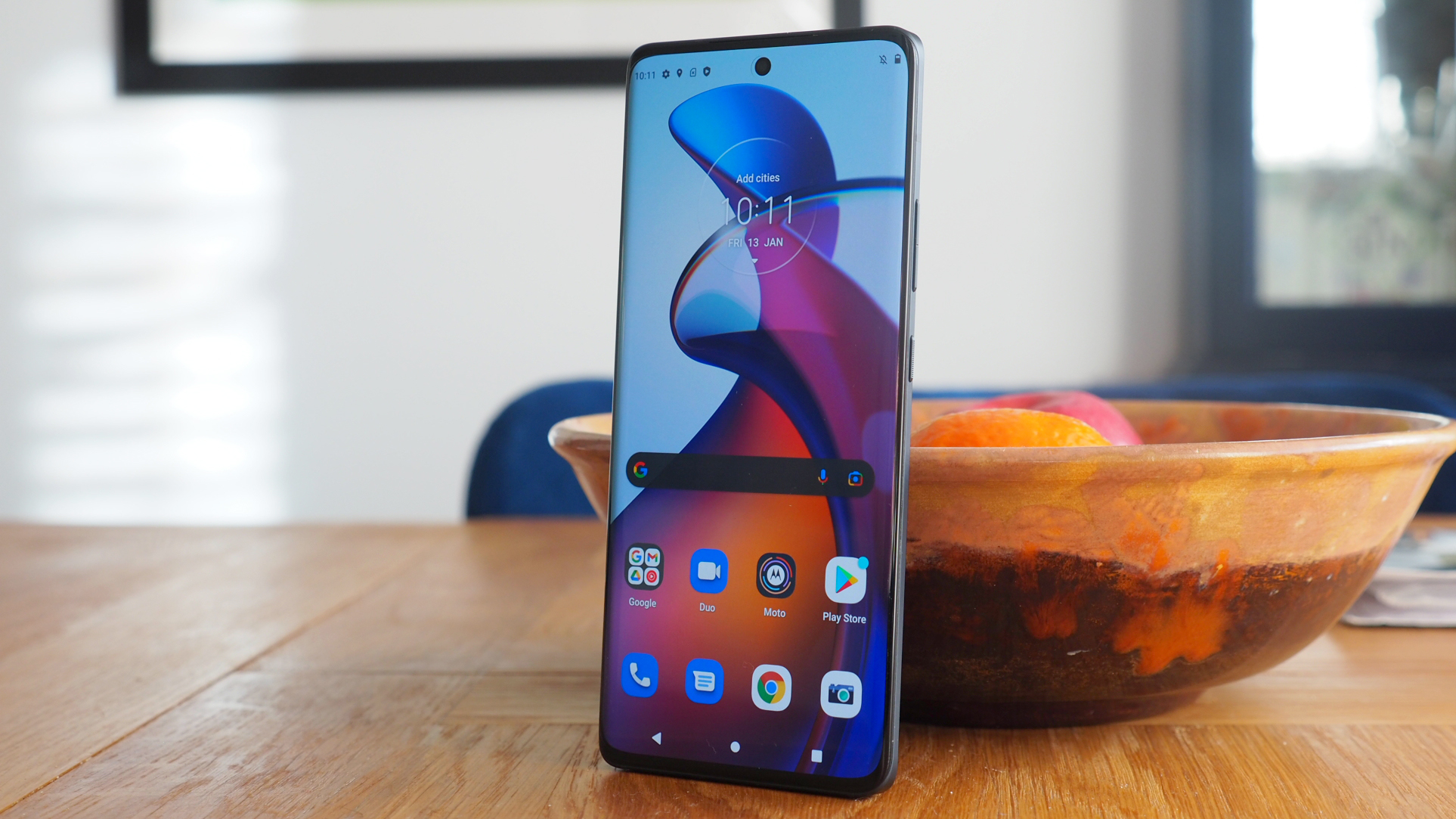
The Edge 30 Fusion is a one of those 'solid but not groundbreaking' mid-range Android phones. The curved glass front and back panels here provide more style than you get in most other phones at the price, plus it has a capable (albeit older) processor, good speakers, and a super-bright screen. For the money it more than sells its worth.
-
+
Bright screen
-
+
Slim glass and metal design
-
+
Powerful previous-gen processor
-
-
Limited water resistance
-
-
Non-expandable storage
-
-
No zoom camera here
Why you can trust T3
The Motorola Edge 30 Fusion is the cheaper alternative to the Edge 30 Ultra. It’s one of those delicious phones that offers some high-end character for way less than high-end cash.
Its bodywork is the highlight. Sure, from the back it may not look like a work of art exactly, but the curvy Gorilla Glass 5 back and front panels look like they belong to a more expensive phone. These curves make a slim phone feel even skinnier than it is, and this one is slim to start with.
It's a good chunk of cash cheaper than the Ultra model, too, so long as you make peace with the 128GB storage and that you don’t get good water resistance or a zoom camera. The Motorola Edge 30 Fusion doesn’t offer it all, clearly, but it does bring a whole lot to the table at a decent price.
Moto Edge 30 Fusion: Price & Availability
And exactly how much can you expect to pay? Well, the Edge 30 Fusion should set you back about £500 in the UK, but at the time of writing its actually even less – just £399 on Motorola's own website.
It's not available in the USA, because Motorola restricts its handsets regionally, so don't get it confused with the altogether more vanilla Motorola Edge 30 (i.e. no 'Fusion' to be seen here).
Moto Edge 30 Fusion review: Design
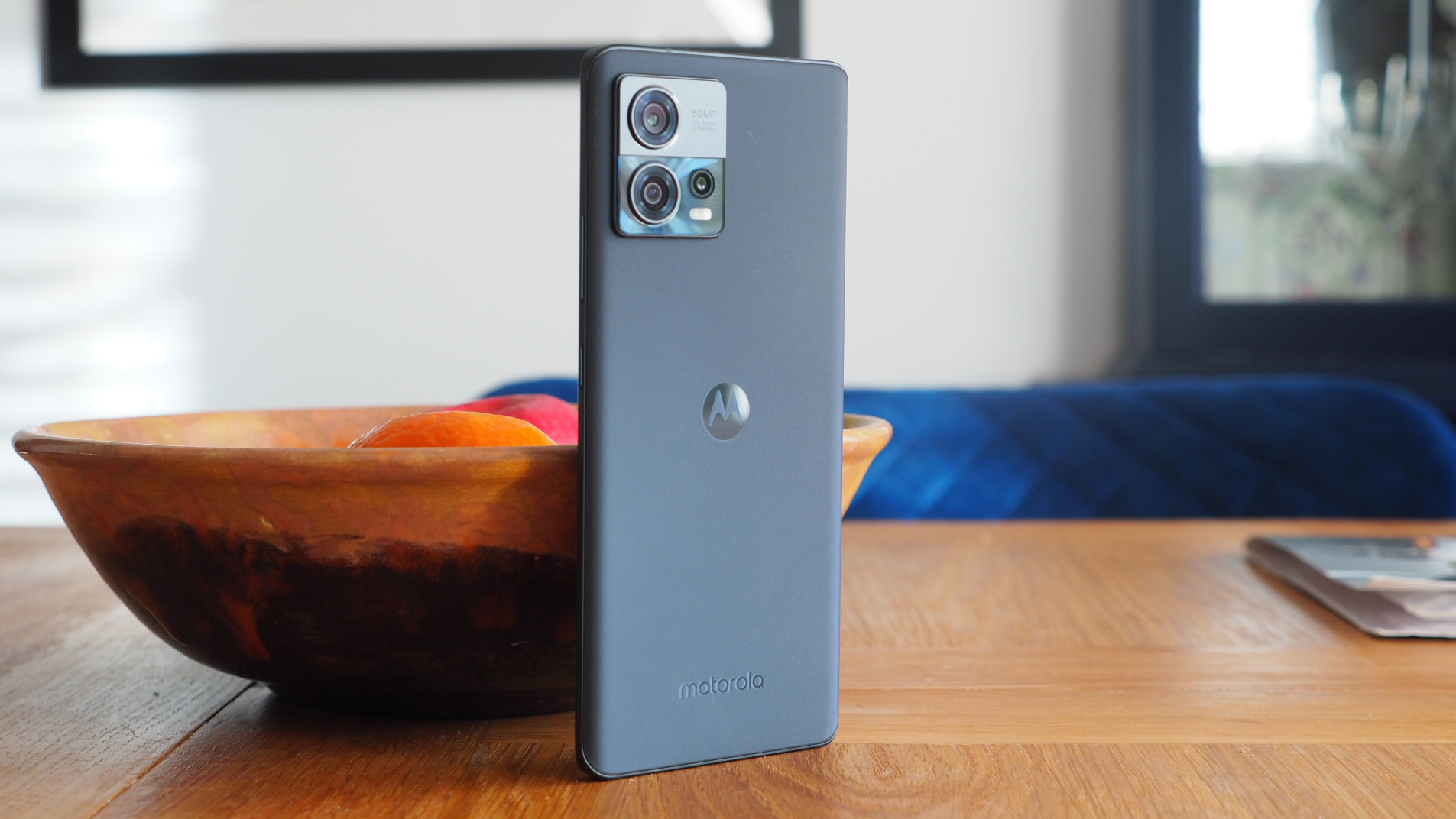
It seems a shame to cover up the Motorola Edge 30 Fusion with a case. This isn’t down to how it looks. Like most Motorola handsets, the Fusion is pretty unremarkable in that sense.
However, it has curved glass front and back panels, plus a band of aluminium around the sides to join the two together. It feels cool in the hand, perhaps even slimmer than the 7.5mm thickness might suggest thanks to the tapering of the parts you actually touch.
The only bits of plastic on show are the little bands used to make sure the wireless antennas actually work. You could add around 50 per cent to the price of the Edge 30 Fusion and its design wouldn’t feel out of place. Which is a very good thing indeed.
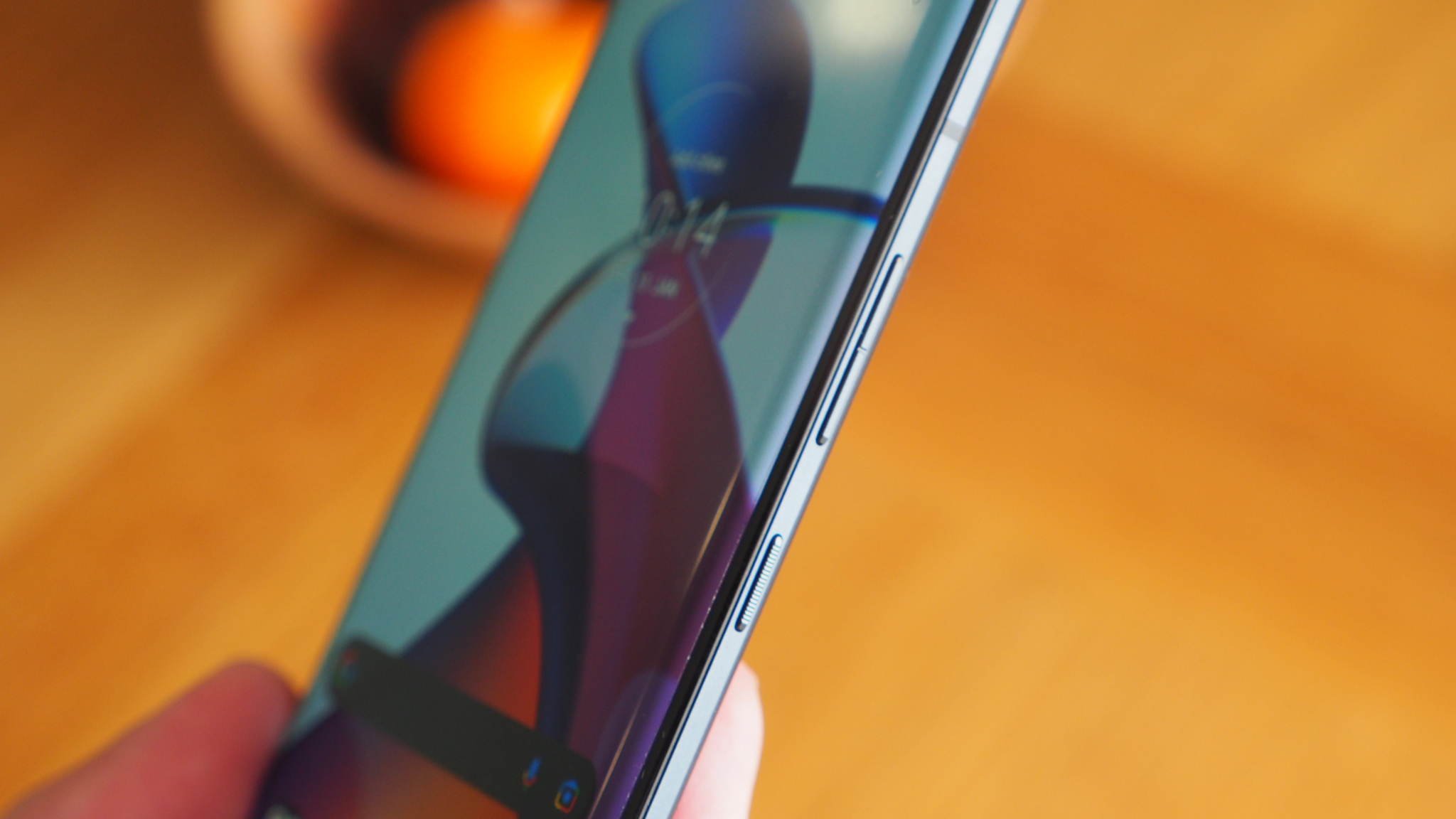
You could get the Samsung Galaxy S21 FE instead if you wanted (although it'll probably cost you a couple of hundred more at the time of writing). That's a bigger-name phone, sure, but has a plastic back whereas the Edge 30 Fusion nets you a true high-end build style.
I say “style” because not all the substance of top-end build is actually here. The Fusion has very basic water resistance: IP53. It can handle a touch of rain, a spattering of baby drool, but not a full dunking, whereas the Galaxy S21 FE can hack the lot.
Like most other aspirational mid-range phones, the Edge 30 Fusion does not have a headphone jack or expandable memory either. Its speakers are great, though, particularly considering this is a phone made to be impressively slim.
There’s one speaker above the screen and one on the bottom. They sound punchy and tight, don’t distort at high volumes and have enough lower-frequency output to avoid music becoming reedy-sounding. Watch a music video in landscape and you can hear that more of the sound output comes from the bottom driver, though.
Moto Edge 30 Fusion review: Display

The Edge Fusion's 6.55-inch screen is great too, but not for the reasons you might guess. This is a 144Hz OLED panel, waving two fingers at the 120Hz crowd. But if those extra 24Hz make a big difference, my eyes are too rubbish to notice.
I do think you’ll notice the Motorola Edge 30 Fusion’s fab brightness, though. It’s brighter than the average when used indoors, and beats plenty of recent enough flagships when used outdoors. You'll never have trouble seeing this screen.
Colour reproduction is strong too, although Motorola doesn’t exactly give you tonnes of options here. You can pick between Natural, which looks excellent but may be a bit restrained for some eyes; or Saturated, which looks as it says, but may look overbaked to many eyes – it does to me!
The Motorola Edge 30 Fusion supports HDR video (for high dynamic range content), but that’s hardly notable anymore. As such we get pretty close to the true flagship phone display experience here.
The resolution of 2400 x 1080 isn’t ultra-high, but the disparity isn’t obvious, leaving a slight shift in colour temperature as you turn the phone around as the most obvious shortcoming.
Given the Motorola Edge 30 Fusion’s price, that’s a good result where the display is concerned.
Moto Edge 30 Fusion review: Software
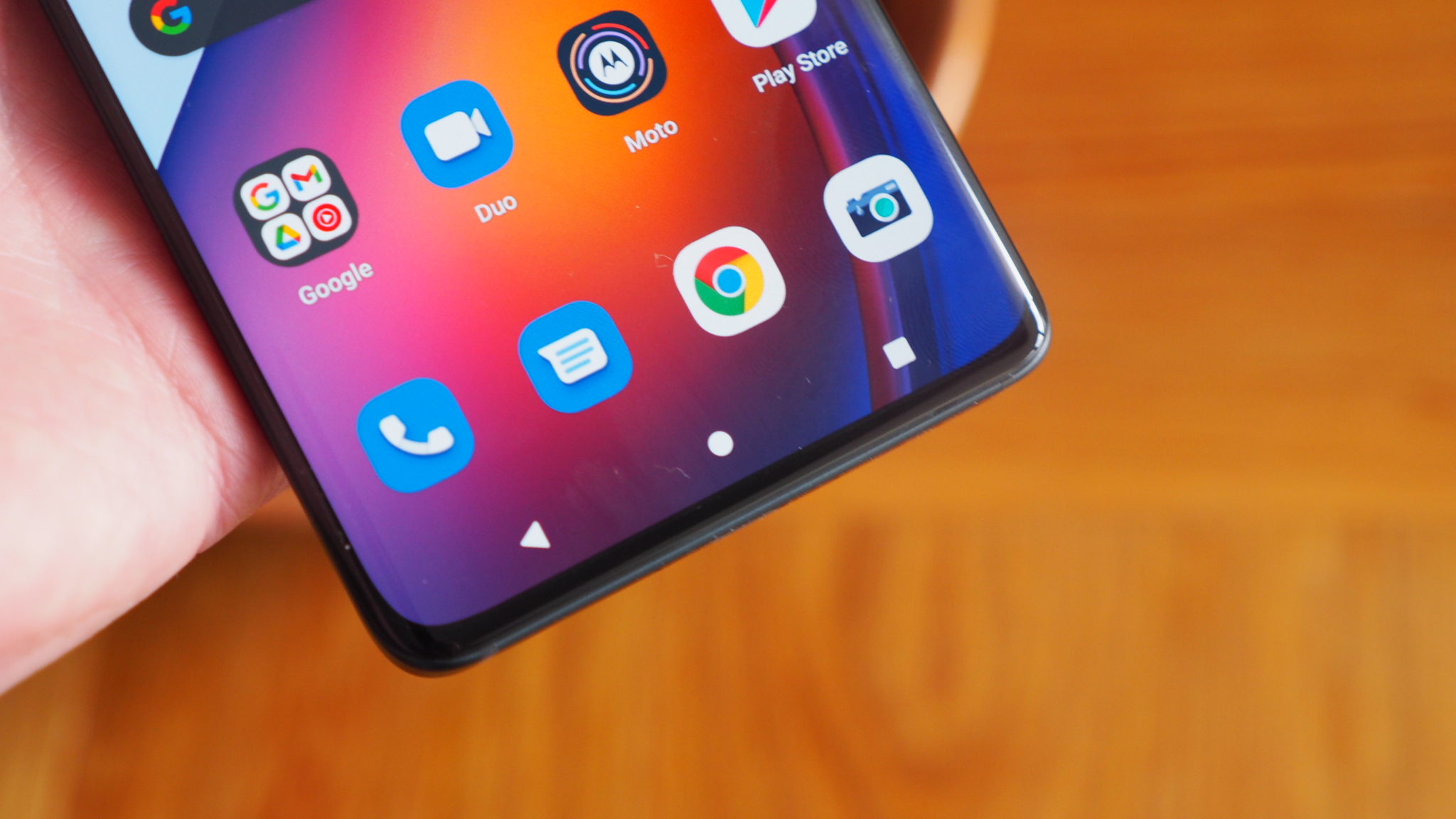
The Edge 30 Fusion has inoffensive software. It’s 'the Motorola way' and something I've long praised. While the phone has a few of its own software features, a lot of the basics are left unchanged from standard Google Android.
These include the look of the drop-down menus and the layout of the app drawer. Motorola changes are the same as those you’ll find in other Motorola phones. Motion gestures let you control features like the torch and Do Not Disturb mode by turning or flicking the phone in a particular way. And if you find you keep on firing them off by accident, just turn off the specific gesture.
The Peek Display standby screen is more classic Motorola. It lights up when you pick up or move your phone, but don’t hit any buttons. It’s a way to check the time and what kind of notifications arrived recently without actually waking the device properly.
There’s nothing dramatic to see here, but Motorola offers a more stripped-back, nonsense-free, take on Android than just about any other manufacturer... bar Google, of course, for which there's the Pixel 7 and Pixel 7 Pro to also consider.
Moto Edge 30 Fusion review: Performance
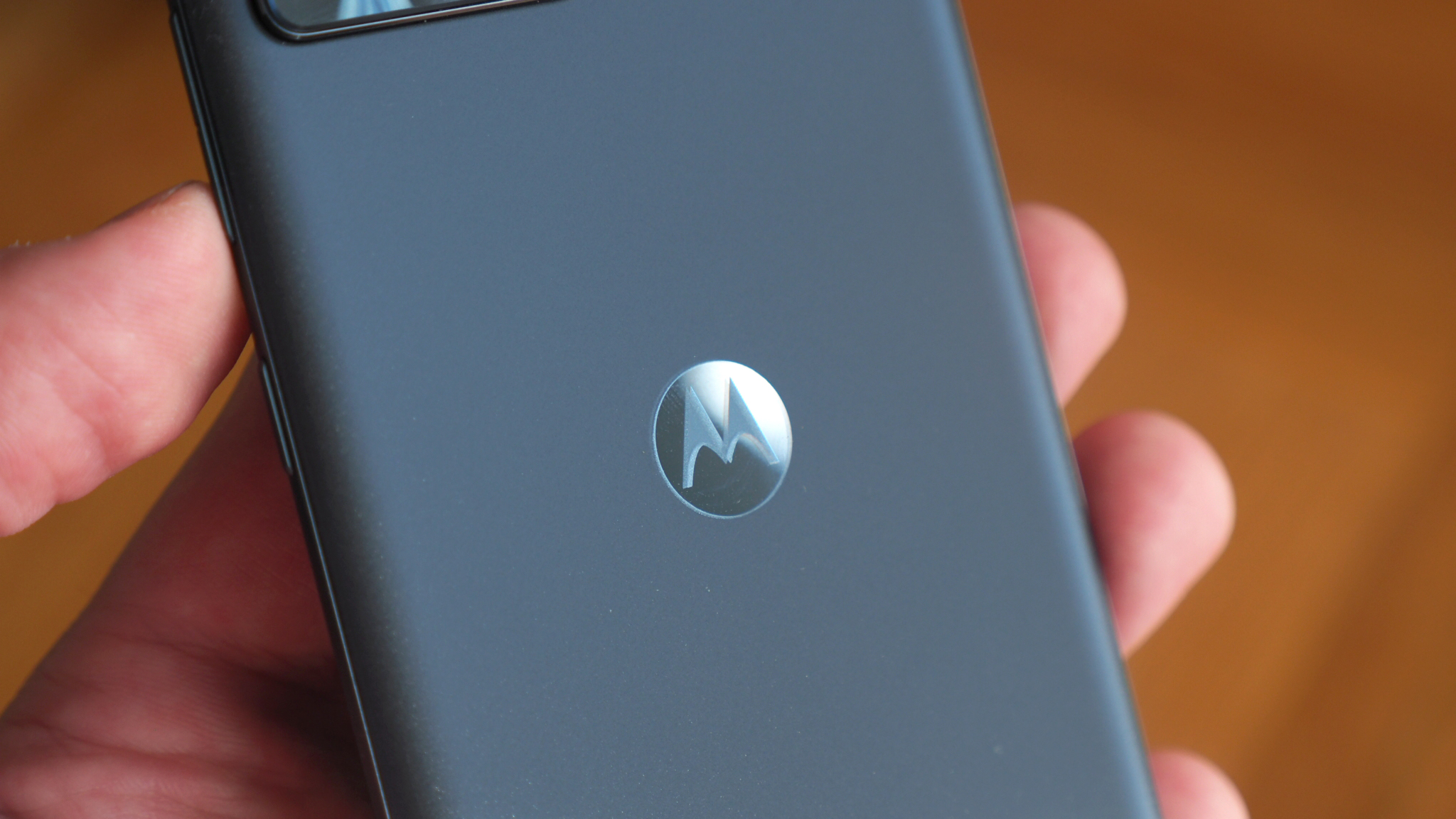
Performance is mostly great too. The Motorola Edge 30 Fusion has the Qualcomm Snapdragon 888+ processor, as seen in slightly older monster mobiles like the Asus ROG Phone 5S Pro. And it’s a tiny wee bit better than the standard Snapdragon 888 of the rival Samsung Galaxy S21 FE.
This is one of our favourite ways for manufacturers to bring down the costs of powerful phones — just use a slightly older processor, rather than one originally intended for mid-range Androids.
The newer Snapdragon 8 chips have much higher peak performance, but phones with one of those inside also typically throttle performance after a few minutes way more than the Motorola Edge 30 Fusion.
The Edge 30 Fusion scores 3638 points in Geekbench 5, compared to around 4300 in the Edge 30 Ultra with its Snapdragon 8+ Gen 1.
There’s a difference, clearly, as phones like Ultra can still play tricky games like Fortnite very well. Phones like the Fusion are all about getting you close to the experience of a super-expensive phone for less money. Job done, on performance at least.
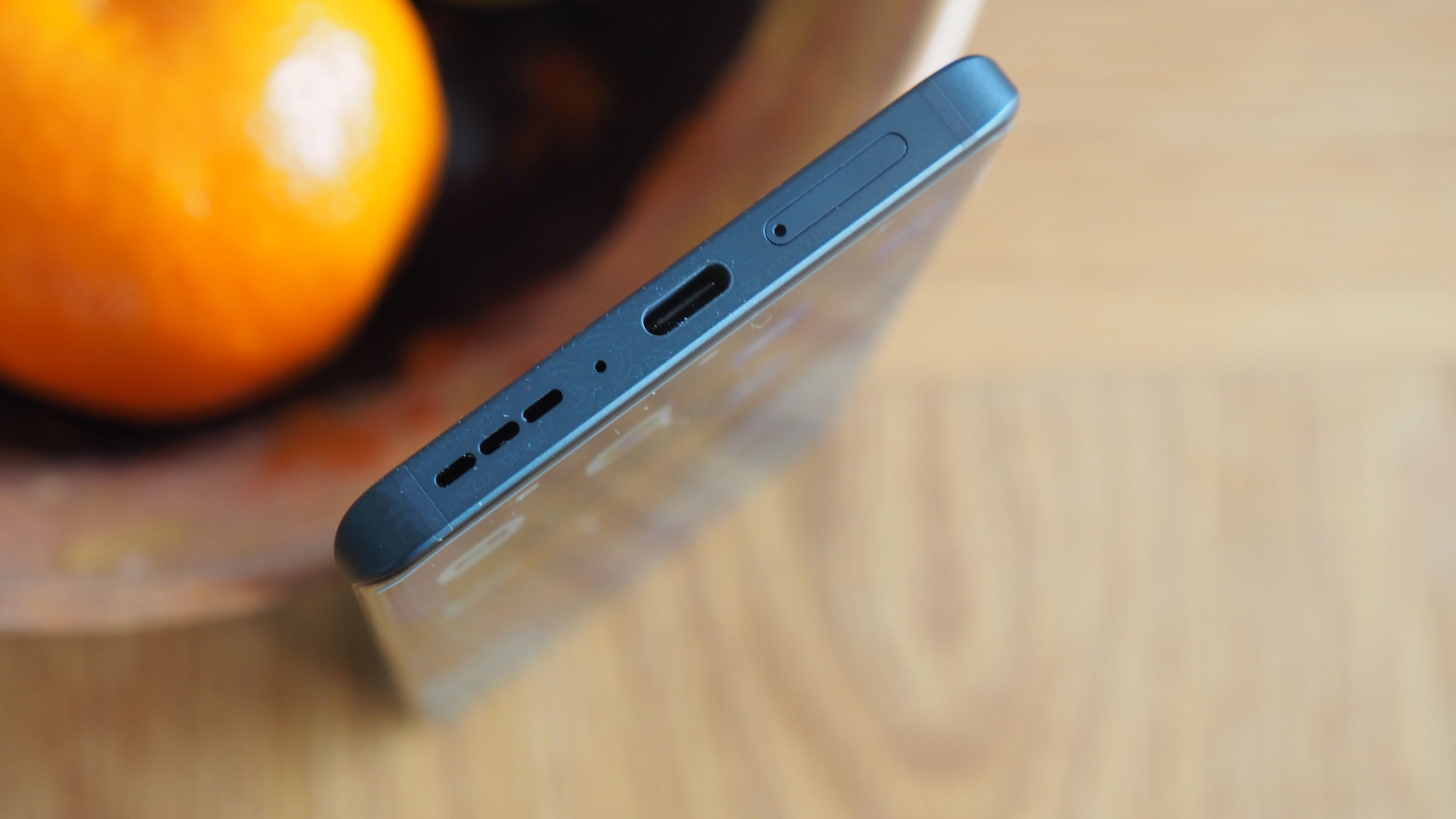
The Edge 30 Fusion’s battery life is solid too. This is reassuring given the 4600mAh capacity is, as in most super-slim phones, just a little lower than what would be ideal.
You can expect to be left with a solid chunk of charge left by the end of the day, but few people are going to get the Motorola Edge 30 Fusion to last two days. It all varies by use, of course, but having around 25 per cent charge by the end of the day was quite common for me.
The Fusion is also something of a middleweight in terms of charging power too. It includes a 68W charger, which fills up the battery in just under 50 minutes.
That 68W is a lot better than the 25W of a Galaxy S21 FE, but Xiaomi shows how it’s done with the Xiaomi 12T Pro and its 120W charger. In practice we find it means you just have to leave a couple more minutes for top-ups than in the very best.
Moto Edge 30 Fusion review: Cameras
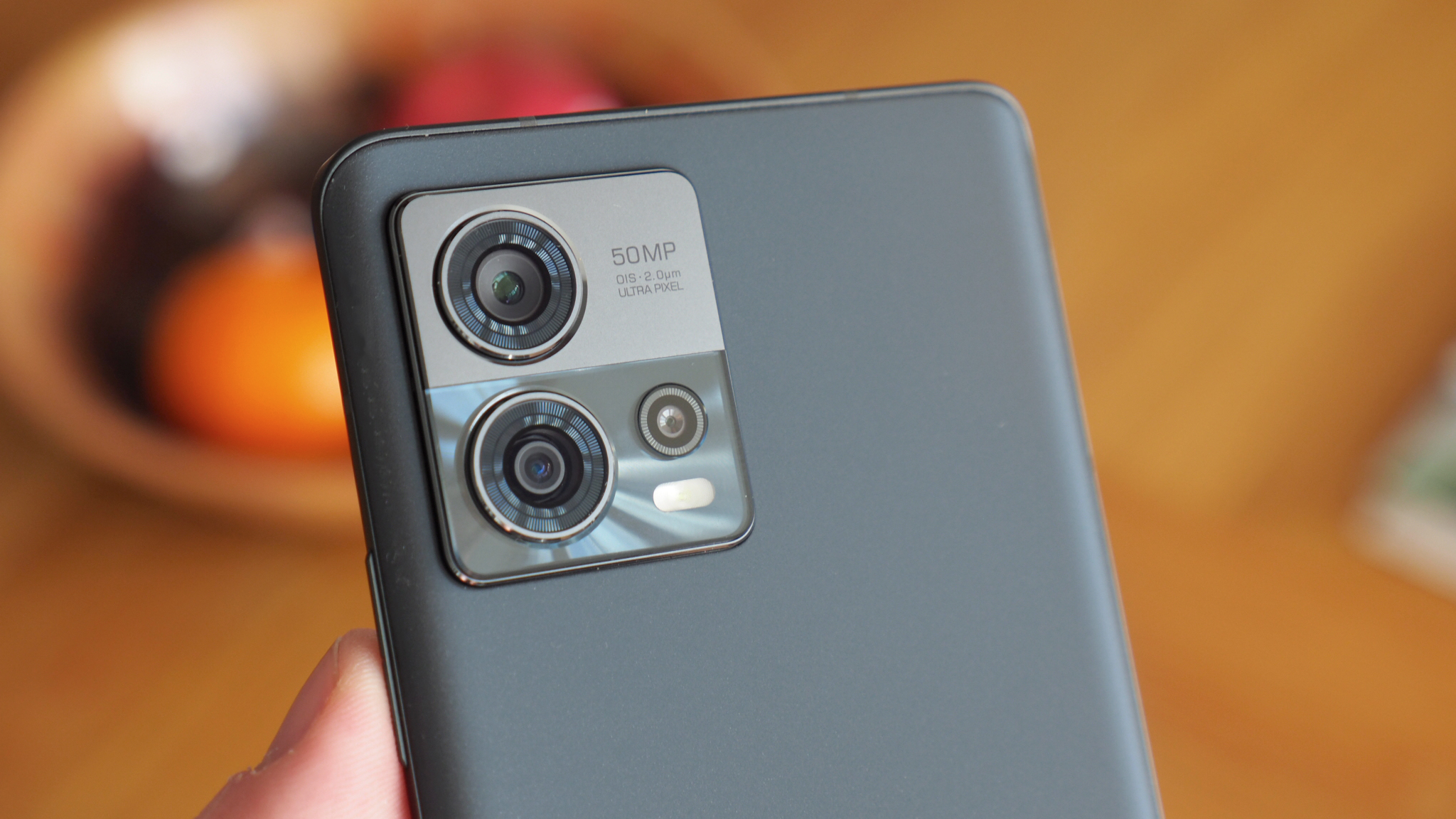
If you’re the kind of person who wants to spend mid-range money to get a high-end Android, you’re going to have to accept some compromises in the camera. “Fake it ’til you make it” only gets you so far here.
The Motorola Edge 30 Fusion’s big camera compromise is there’s no zoom, whereas the Edge 30 Ultra has a 2x optical zoom.
Accept that, however, and the rest is fair enough. The Fusion has a pretty great 50-megapixel primary camera, plus a solid 13MP ultra-wide, but a poor 2MP depth camera whose job could potentially have been done by the other two. It’s there for the portrait mode, which blurs out the background in shots, but I don't really care for it much, just as I say of any phone really.
The 50MP camera can pretty much take whatever you’ll throw its way. Night images are no problem, and using the Night Vision mode the Fusion will make scenes appear much brighter and clearer than they seemed in person.
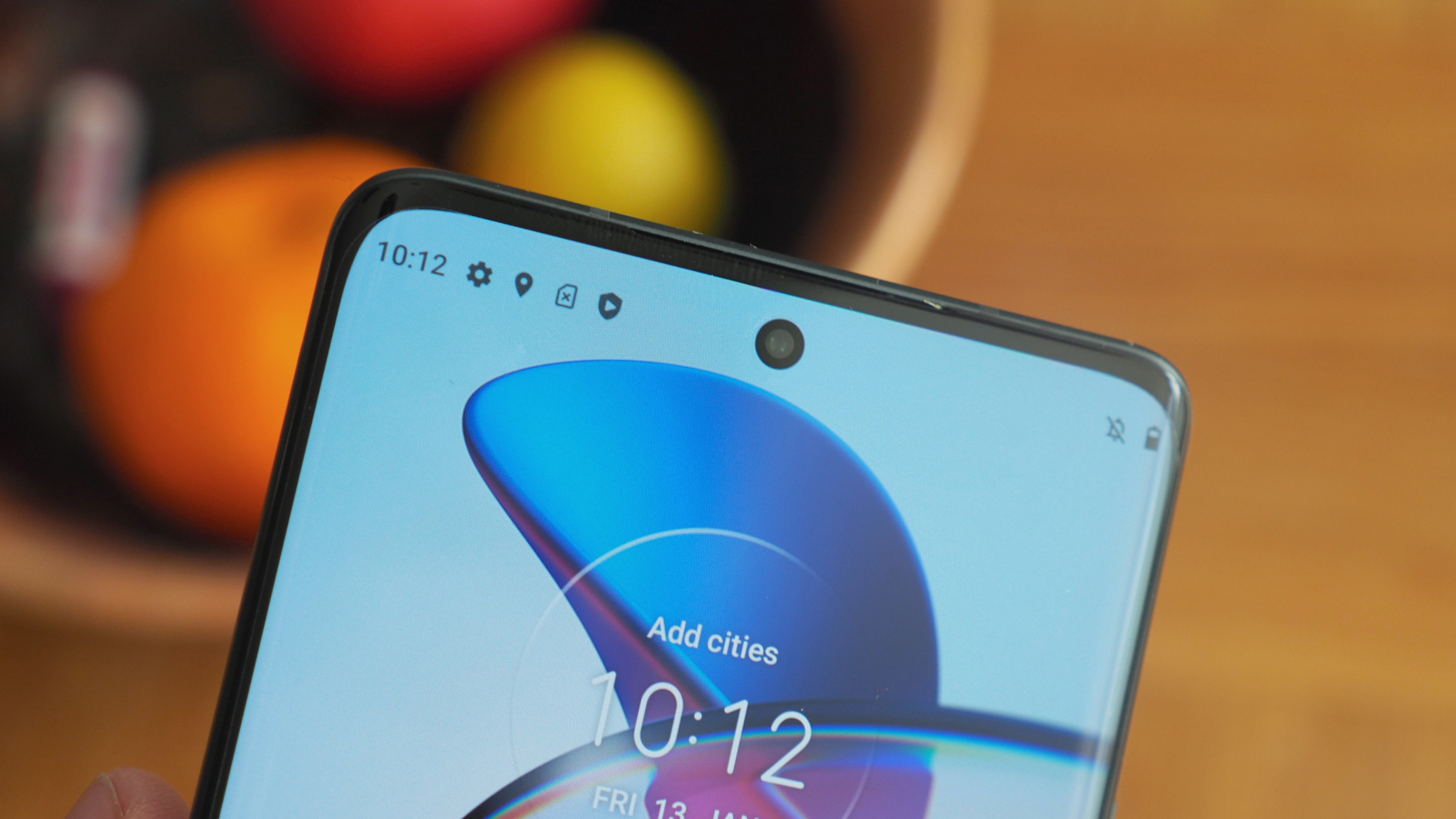
Its HDR is super-effective at its best and you won’t see the over-enthusiastic colour representation seen in some other mid-tier brands like Realme. Look really closely and you may notice that image processing isn’t quite as subtle as that of, say, the Google Pixel 7’s. But we don’t think Motorola was aiming to set picture-quality-to-price records here.
This is a good camera, if not quite a world-beating one. Its ultra-wide also offers an image quality boost over the 8MP cameras you typically see in slightly cheaper mid-range Android handsets. Ultra-wide images taken at night still kinda suck, though, as that camera can’t use Motorola’s Night Vision mode.
You can shoot 8K video with the Motorola Edge 30 Fusion but, as with most of these modes you should probably stick to the smoother, properly stabilised 4K/60 mode.
The selfie camera is another hit. It has a 32MP sensor, but uses pixel binning to take 8MP images as standard. These have a good amount of detail — not close to 32 megapixels worth of course, but a solid result for a mid-range selfie cam.
Moto Edge 30 Fusion review: Verdict
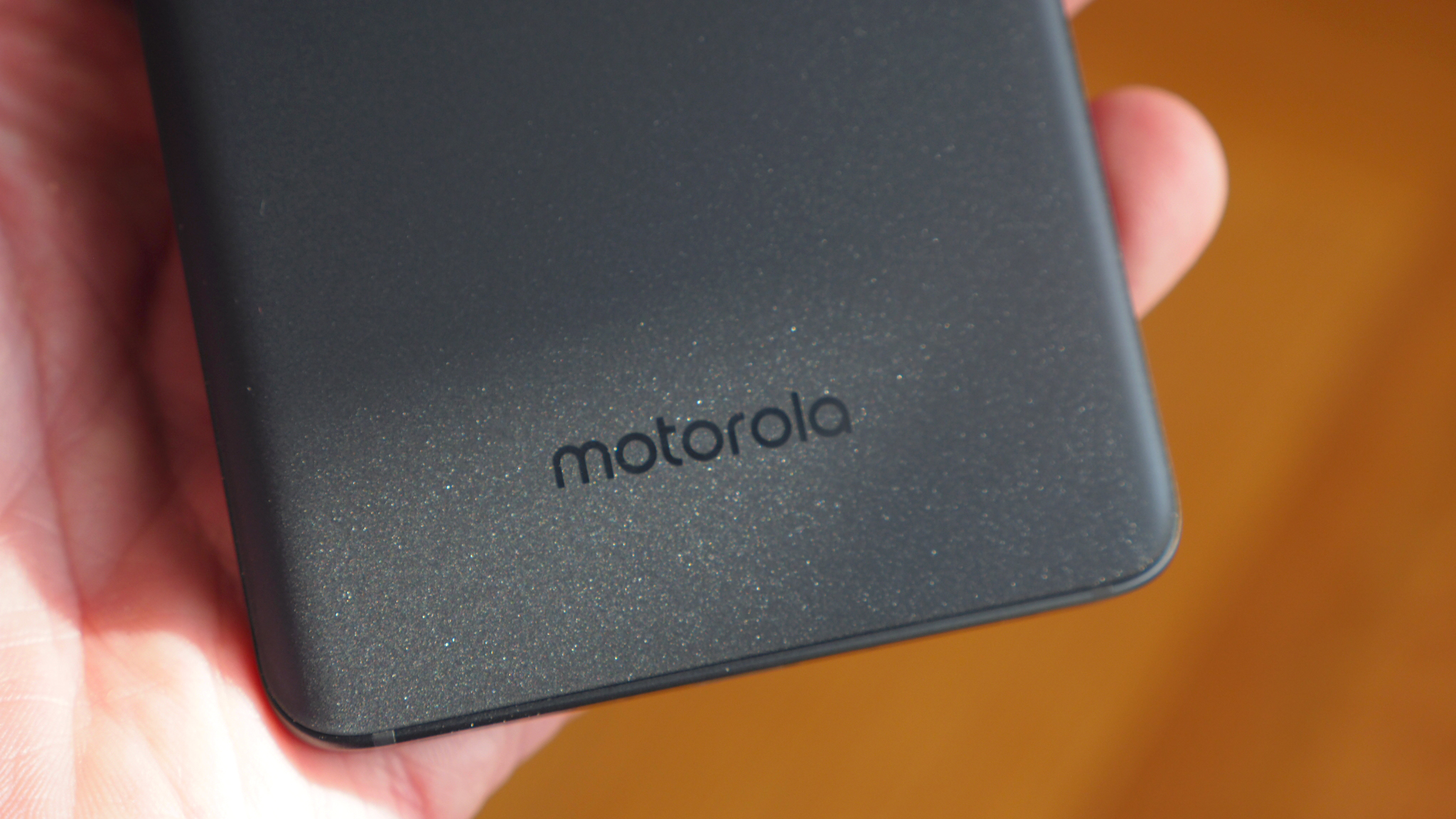
The Motorola Edge 30 Fusion is a solid-but-not-groundbreaking mid-range Android phone. It’s a good fit for folks who want some surface-level gloss. The curved glass front and back panels here provide more of it than you get in most other phones at the price.
It has a great processor (albeit an 'older' one), making the Fusion ready for gaming, plus good speakers and a super-bright screen that's undeniable. The actual look of the phone might seem a bit bland to some, once you look beyond that curved glass, but it’s one of the top contenders in this category.
Also consider
The Fusion sits at an odd price, between affordable flagships like the OnePlus 10T and the best “affordable” mid-range phones, which are often a bit cheaper.
One of the strongest competitors is the Samsung Galaxy S21 FE, which originally cost £700 but can be had for similar cash these days. It’s less well-built but more striking to look at. It’s less powerful, but has a much more versatile camera array thanks to its 3x zoom.
While it’s not entirely fair to compare the two, we mostly care about making your money go further. And if you don’t care about a full glass and metal design, the FE is a good shout.
You may also want to consider the Xiaomi 12T Pro. It has brilliant 120W charging and is a beefier phone all-round, better for watching movies on the go thanks to its larger screen. However, it’s heavier and its build is more ordinary, so the overall focus is quite different.
Sign up to the T3 newsletter for smarter living straight to your inbox
Get all the latest news, reviews, deals and buying guides on gorgeous tech, home and active products from the T3 experts

Mike is T3's Tech Editor. He's been writing about consumer technology for 15 years and his beat covers phones – of which he's seen hundreds of handsets over the years – laptops, gaming, TV & audio, and more. There's little consumer tech he's not had a hand at trying, and with extensive commissioning and editing experience, he knows the industry inside out. As the former Reviews Editor at Pocket-lint for 10 years where he furthered his knowledge and expertise, whilst writing about literally thousands of products, he's also provided work for publications such as Wired, The Guardian, Metro, and more.
-
 Polar’s new subscription feature lands in the shadow of Garmin’s Connect+ rollout
Polar’s new subscription feature lands in the shadow of Garmin’s Connect+ rolloutPR genius or timing disaster? Polar’s new Fitness Programme adds adaptive training to its ecosystem
By Matt Kollat Published
-
 New Orient Star watches offer a glimpse of the magic within
New Orient Star watches offer a glimpse of the magic withinThere are two new skeleton pieces
By Sam Cross Published
-
 Netflix's most surprising 100%-rated sci-fi series returns with gorgeous trailer
Netflix's most surprising 100%-rated sci-fi series returns with gorgeous trailerLove Death + Robots is back for more
By Max Freeman-Mills Published